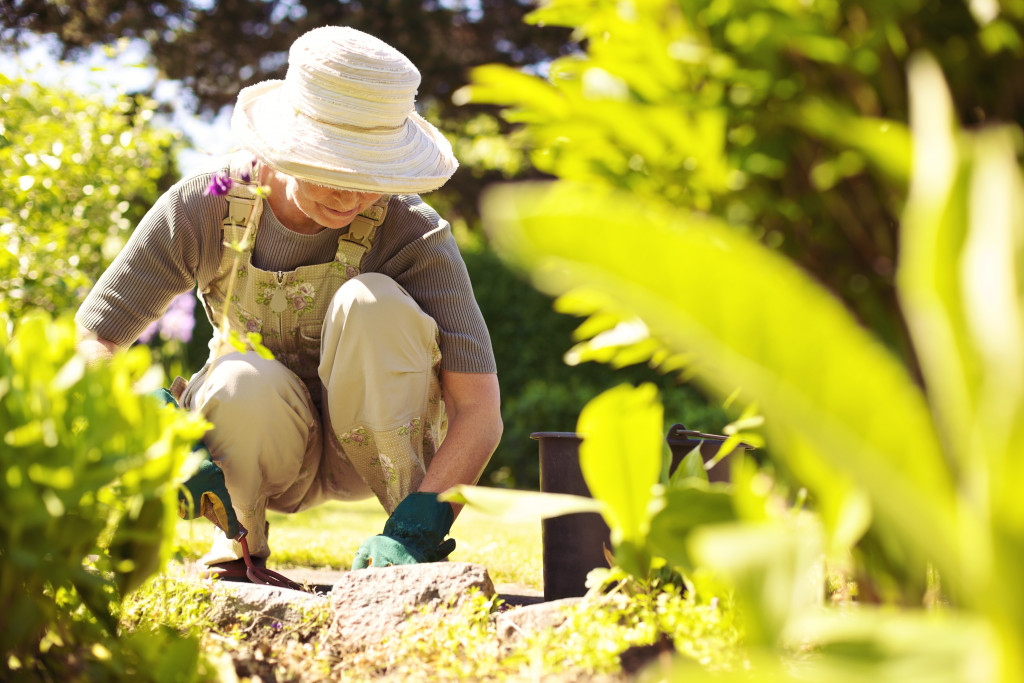Establishing a garden is similar to purchasing real estate. It all boils down to location. Making your private garden a feature for your property will motivate you to invest additional time there. However, with great gardens come great responsibility, especially in maintaining them.
When plants contract a disease, it is amongst the most perplexing events that may occur in anyone’s garden. How did it come about? What should I do to stop it? Several questions would emerge the moment these pests start attacking your plants. However, the most crucial thing to grasp is that with illness prevention comes the triangle of disease.
This entails that plant diseases may occur when three factors are present. Those are the host, aka susceptible plant; a pathogen such as fungi, bacteria, or virus capable of attacking the plant; and favorable climatic circumstances such as too much heat or drought. Prevention means that at least one edge of the triangle is knocked off, so the illness will not occur if none of this happens.
But instead of waiting for a crisis to arise, why not consider finding the best protection for your plants beforehand? After all, prevention is still better than cure.
Before purchasing plants, do a thorough examination
The most effective method of preventing illness from invading your flower garden is to prevent it early. For example, acquiring a plant with a condition is not exactly the type of bonus you’d like your garden to have. One of the most challenging aspects of learning to grow plants is determining what healthy vegetation should be like, making it tough to decide on whether what you’re about to buy is ill.
Collecting a few plant magazines and books, searching over credible sites, and talking to experts would give you an idea of what a healthy flower looks like. For instance, avoid bringing home plants that have rotten stems or living insects. These issues may readily extend to your healthy vegetation and can often be difficult to cure once they have established a territory.
Make use of a compost pile

Compost piles disintegrate at different rates based on the components that are included in the piling. Some items may have decayed enough to be placed in your garden, while others need more time. During a rigorous composting process, extreme temperatures are generated for lengthy periods, effectively killing any microorganisms present in the material. However, damaged plants that have not been correctly disposed of can reintroduce possible pathogens into your yard.
If you’re not sure about your compost pile condition, you must avoid utilizing green waste as a mulch in sensitive crops and limit incorporating possible contaminated garbage in your pile.
Keep a close check on your insects
When insects attack plants, the damage they do goes well beyond simple harm. Most pathogens can only penetrate plants through an opening, and pest infestation gives that opportunity. In fact, certain insects work as a transit for diseases and move them from one species to the next.
For example, aphids are among the most prevalent carriers, and thrips propagate and transmit the viruses such as impatiens necrotic spot virus, which is a severe concern for organic farmers over the past ten years.
Water them adequately
Hydrating your garden is a beneficial move, but because many illnesses require water in the same way as floras do, your watering strategies will make a significant difference. Many soil and air pathogens need fluids to travel, thrive, and proliferate. To prevent providing these diseases with an ideal habitat, use watering systems that cap the moisture on a plant’s leaf. This can be accomplished by installing sprinklers, drip irrigation, or soaker hose.
If you prefer hand-watering, it is best done with the leaves pushed back to allow the roots to be watered more thoroughly.
Pruning at the appropriate time
It is best to trim bushes and trees in early fall than to wait for spring. Broken branches can be infected during winter, enabling the disease to develop as the plants sleep. Pruning in winter also prevents illness from propagating into new growth. Late winter storms might do further harm, so a broken twig is better trimmed than ignoring them and suffer consequences later on. Always use sharpened instruments to create clean, quick-healing cuts, and ensure that only the unhealthy tissues are removed.
Effective garden maintenance may improve the quality and length of time that your flowers, trees, plants, fruits, and vegetables last. Almost every plant needs to have a few hours to absorb sunlight, while others demand less. Thus, it is vital to understand the best technique to look after your garden if you want them to survive each season and have gorgeous flowers for your outdoor space.

